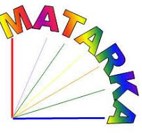Experiences of a long day in the feld with Gábor Fekete from Belsőbáránd to the Velence Hills
Abstract
Professor Gábor Fekete, the excellent vegetation ecologist and pioneer of several ecological subdisciplines in Hungary passed away in December 2016. The authors of this text recall a day spent with him in the feld in August 1996. That time our research included mapping surviving fragments of natural loess steppe grasslands in the Mezőföld region of Hungary. Tus, our feld day’s frst stop was in such a grassland stand at Belsőbáránd (Fejér County, Hungary) where we had the opportunity to learn from Prof. Fekete about loess steppes, of which he was a renowned expert. There he shared with us a detailed comparison of loess and sand steppe grasslands. Te second stop of our feld trip was in the Velence Hills, where a few days earlier we found again the long-not-sighted rare C4 species Chlorocyperus glaber. The occurrence originally was discovered by Gábor Fekete in 1953, as a new species to the Hungarian flora. We learned that the enthusiasm of the young botanist on the new find was somewhat cooled then by Ádám Boros, a senior botanist of the time, who doubted the persistence of the population. Time has proven the opposite: the population survives even today. Prof. Fekete was not only an outstanding scientist but also an adept and warm-hearted supporter of colleagues; he was ready to answer questions at any time and his advices helped the research of generations of botanists. We take this very last opportunity to express our deepest gratitude for all the help we have received from him.
References
Bartha D., Király G., Schmidt D., Tiborcz V., Barina Z., Csiky J., Jakab G., Lesku B., Schmotzer A., Vidéki R., Vojtkó A., Zólyomi Sz. (szerk.) 2015: Magyarország edényes növényfajainak elterjedési atlasza. Nyugat-magyarországi Egyetem Kiadó, Sopron, 329 pp.
Farkas S., Molnár V. A. 2001: Adatok hazai Nanocyperion-fajok ismeretéhez VI. A Cyperus glaber L. második magyarországi lelőhelye. Kitaibelia 6(1): 167.
Fekete G. 1954: Chlorocyperus glaber (L.) Palla Magyarországon. Botanikai Közlemények 45: 253–254.
Kalapos T., Baloghné-Nyakas A., Csontos P. 1997: Occurrence and ecological characteristics of C4 dicot and Cyperaceae species in the Hungarian flora. Photosynthetica 33(2): 227–240. https://doi.org/10.1023/a:1022112329990
Kádár I., Ragályi P., Szemán L., Csontos P. 2014: Tápanyagellátás hatása 13 éves telepített gyep fejlődésére és botanikai összetételére a Mezőföldön. Botanikai Közlemények 101(1–2): 95–104.
Simon T. 1992: A magyarországi edényes flóra határozója. Harasztok – virágos növények. Tankönyv kiadó, Budapest, 892 pp.
Zólyomi B., Fekete G, 1994: Te Pannonian loess steppe: differentiation in space and time. Abstracta Botanica 18: 29–44.


















